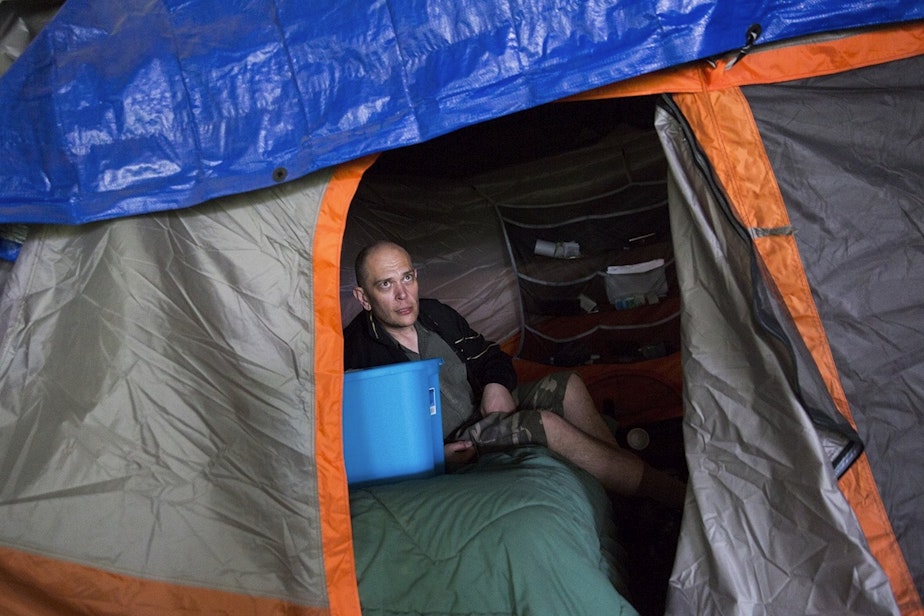Where do the drugs that land on Seattle streets come from?

KUOW listener Janet Jones wanted to know: Where do the drugs that contribute to homelessness come from?
Nearly a quarter of homeless people living on the streets of Seattle said they used meth, according to a survey.
Seventeen percent said they used heroin.
Where does that come from? Mexico, mostly.
Meth is synthesized in clandestine laboratories and heroin comes from poppy fields. Then big criminal organizations like the Sinaloa cartel smuggle drugs in 18-wheelers and cars with hidden compartments that go up Interstate 5 and through Yakima.
Sponsored
“Yakima is one of the principal drug distribution centers in North America,” said Steven Freng with the Northwest High Intensity Drug Trafficking Area, a program of the Office of National Drug Control Policy.
The cartels use incredible creativity in hiding drugs throughout empty cavities in a car or truck, such as pockets in doors, ceilings or spare tires. Smugglers have even found ways to stash drugs in air-tight compartments inside a fuel tank, Freng said.
“You push a button underneath the dashboard and a little latch will open underneath the car, and you can crawl under there and access the compartment,” he said.
Sponsored
At the Seattle division of the Drug Enforcement Administration, Keith Weis, the special agent in charge, has seen many ways the cartels smuggle drugs in his almost 30-year career.
“From humans smuggling narcotics within their bodies, to any type of commercial good that you can think of: Paintings that have narcotics hidden within the frames or children's toys that may be laced with narcotics,” Weis said.
Now the same routes are being used to smuggle fentanyl in the form of tens of thousands of counterfeit oxycodone pills at a time.
Counterfeit oxycodone pills contain fentanyl, which is a much more powerful and lethal opiate than heroin. They look identical to legitimate 30 milligram pills and come in white and shades of blue and green.
“Traditional criminal organizations with huge distribution networks and capability have really seized on the moment to take off with fentanyl, and it's probably my biggest worry,” Weis said.
It worries others in law enforcement too.
Sponsored
“The flood gates are opening,” said Mark Richardson, a lieutenant with the Snohomish Regional Drug and Gang Task Force.
Undercover agents in the county buy meth, heroin and sometimes cocaine from drug cartels during investigations, he said. This year the drug dealers started asking if the undercover buyers wanted fentanyl, too, Richardson said.
Drugs also come from China, but those don’t make up the largest share of the market. Cartels like to deal in bulk, he said, and you can transfer a larger volume of drugs smuggled in cars and trucks than you can through the mail.
Right now, a few men from Snohomish County are being tried in federal court for importing fentanyl and pressing them into counterfeit oxycodone pills here. That fentanyl came through the mail from China.
Sponsored
Drugs aren’t the main reason people become homeless, however. One in five homeless people in King County landed on the streets because of drugs and alcohol, according to county's point-in-time count of people experiencing homelessness.
In Seattle, it’s closer to one in 10, according to a city assessment last year. The main reason someone becomes homeless is loss of a job. Unaffordable rent also plays a role. Across the county, eviction is a big driver of homelessness too, causing homelessness 11 percent of the time.




